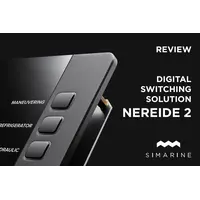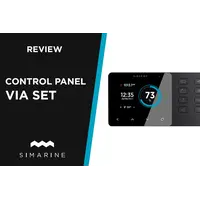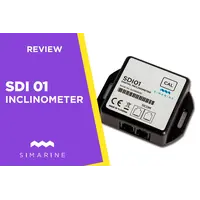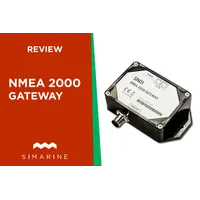Shunts are an integral part of all digital measuring instruments and many electromechanical ones, especially magnetoelectric systems. A shunt is a high-precision measuring element (resistor) with a fairly small and precisely known value of internal resistance, which is connected to an open circuit in parallel with a current measuring device - an ammeter.
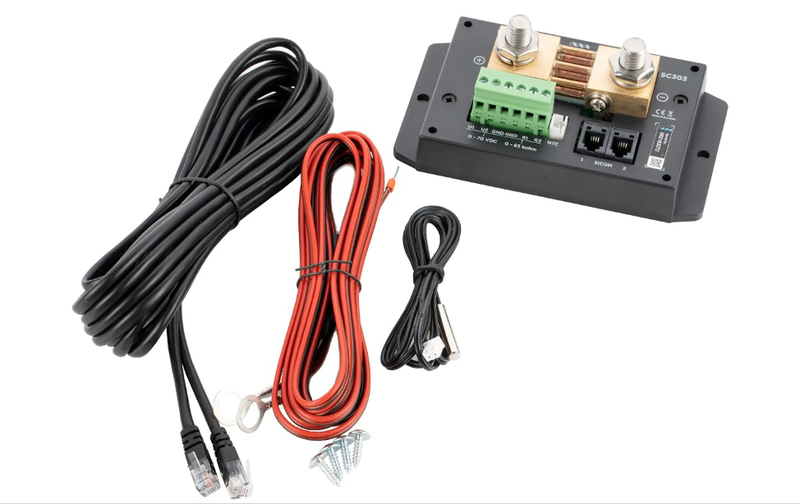
The electrical measuring shunt is designed to solve the following problems:
- in electromechanical devices - for measuring currents whose magnitude exceeds the maximum value allowed for a given device - expanding the current measurement limits of the device;
- in digital measuring instruments - to match the input resistance of the device with the resistance of the load or signal source.
But the shunts that topRik experts present in this review also have additional properties and advantages, since they are an integral part of the PICO modular battery monitoring system. We have already talked about the system itself in some detail in our review of Simarine PICO system monitor.
Since the publication of this review, yachtsmen's interest in Simarine monitoring products has grown significantly, as the company has successfully positioned itself in the market and has good reviews. Therefore, we decided to present in more detail (in the full sense of the word) an excellently proven system, as well as the capabilities of its different versions depending on the type of shunts used - SC303 300A or SC503 500A.
Depending on the model of the Simarine PICO system monitor, you can simultaneously monitor all your batteries, since all information about their condition for all possible characteristics is displayed on the display of the monitoring system. And the model from the Simarine PICO system monitor just depends on the model of the measuring shunts that the display design allows you to install.
In this review, topRik experts will take a closer look at the features of the two types of shunts that are used in different models of the Simarine PICO monitoring display, tell you what battery protection benefits you get from these shunts, what additional functions they perform, and how the SC303 300A Shunt differs from SC503 500A Shunt .
Key Features and Specifications
The central device of PICO systems is a monitor that displays the following battery status data:
- capacity;
- voltage;
- current current;
- remaining operating time at current consumption.
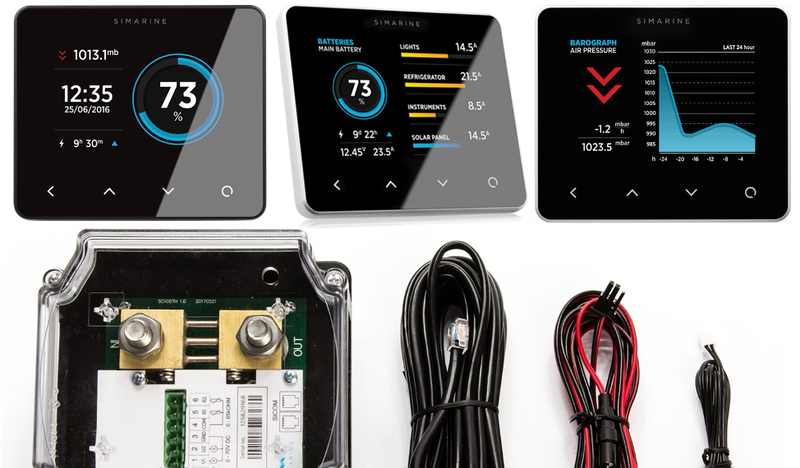
But since the SC303 and SC503 are a combination of a shunt and a tank level module, installing them in a PICO system also allows you to control the water level, fuel level, temperature, ship roll, and also determine, if necessary, how much energy individual devices consume: washing machine, refrigerator, electric stove, air conditioner, etc.
That is, the functionality of the entire monitoring system depends on the choice of shunts, since it is modular, and you can expand it as you add different types of batteries to the yacht’s electrical system, as well as other equipment that consume energy.
Despite the fact that the system involves the selection of additional modules, for example, a module for determining the level of liquids, temperature sensors, etc., the shunts are still the most important modules, since it is the precise monitoring of batteries that makes this system so popular among sailors.
In particular, due to the fact that all current sensors are mechanically calibrated with high accuracy. If the system voltage does not exceed 35 V , then the current sensor can be connected to the positive or negative side . Under this condition, the shunt must be connected to the LOW(-) side.
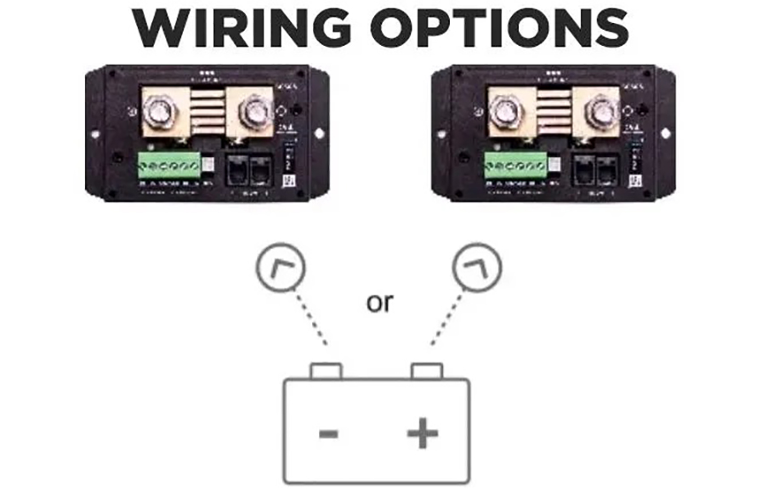
Similarities
The SC303 and SC503 high current combination shunts have the same input data:
- current monitoring – 1 input;
- voltage input – 2 inputs (U1, U2);
- resistance input – 2 inputs (R1, R2);
- JST for temperature sensor (included in delivery) – 1 connector.
The SC303 and SC503 can measure continuous current up to 300A and 500A respectively and have a maximum output power of 7200W at 12V or 14400W at 24V momentary. State of charge (SOC) of the battery system at 12, 24, 36, 48, 60 or 72V.
Differences
The only difference between the SC303 and SC503 is the level of maximum continuous current that can safely flow through the shunt:
- for SC303 the limit is 300 A continuous current;
- for SC503 the limit is 500 A continuous current (excluding short peaks).
Installation and Configuration
If a dedicated battery is used to start the engine, then it is not necessary to measure the current consumed and supplied by it. On the starting battery, only the voltage is monitored. But on the service battery, the input and output current, voltage and charge level are measured.
If there is no pure starting battery on the boat, and both batteries are alternately used to start the engine and to power on-board equipment, install two shunts or move the shunt so that current from both batteries flows through it.
At any time on a boat, it is desirable to know where the energy is going and coming from in the battery. Multiple shunts allow the monitor to display the current received by the batteries from the solar panels and DC-DC charger, or consumed by the microwave, refrigerator and inverter. Monitoring of high-power devices is necessary because high current can quickly discharge and damage the battery.
A properly installed battery monitor is an indispensable tool for troubleshooting a yacht's electrical system. With its help, for example, you can detect that solar panels have become dirty and no longer charge batteries as expected.
Most monitors use shunts to measure current, which are placed on the negative side of the electrical circuit. Some models allow you to use both negative and positive conductors for this, like the Simarine PICO System Monitor. To control consumers (inverters, thrusters) or generators of electrical energy (chargers, solar panels), you can choose either the positive or negative side. It is better to monitor the condition of the battery on the negative side.
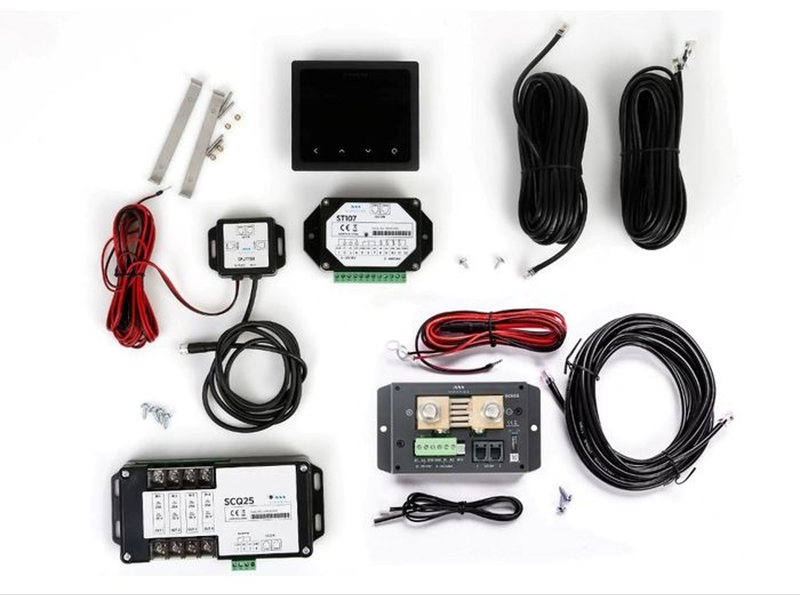
Functionality
Information about the condition of batteries on a boat or yacht is part of the vessel's safety system. Loss of power in an emergency situation leads to serious consequences, and uncontrolled battery discharge leads to significant material losses.
Batteries must not be discharged below a certain level. “End of discharge voltage” is the minimum operating voltage of the battery. If battery discharge continues after the "end of discharge voltage" is reached, the battery may become damaged or discharged to the point that it can no longer be used.
The practice of modern navigation has shown that monitoring the condition of batteries through conventional measuring instruments - voltmeter, coulometer , etc. does not allow taking into account many factors, in particular - losses, self-discharges, capacity reduction, etc. It took time for instrumentation and marine equipment manufacturers to come around to the idea of modern battery monitoring, of which the Simarine PICO system is a prime and now significantly improved example.
This is not just an amp hour meter, but an intelligent battery monitoring device. Before starting work, the nominal battery capacity is entered into the monitor, the device “learns” over several cycles and then operates without outside intervention. The monitor monitors the current, voltage and temperature of the battery and compares the received data with its own battery model. Based on actual data, the model parameters are adjusted, and it constantly corresponds to the real state of a working battery.
Battery monitors can monitor one or more batteries. The simplest device measures the voltage, current and charge of a single battery. More advanced models are designed for two or three battery groups. For the main battery they measure voltage, current and charge, and for additional batteries they measure only current and voltage or only voltage.
Models with a modular principle allow you to add up to 20 independent current sensors or “intelligent” shunts to the circuit, and use them to control up to 6 batteries. Such monitors have a built-in Wi-Fi module and transmit information about the battery status to the owner’s smartphone or tablet.
This is exactly the model that is any version of the Simarine PICO monitoring system, which is based on intelligent shunts SC303 300A and SC503 500A.
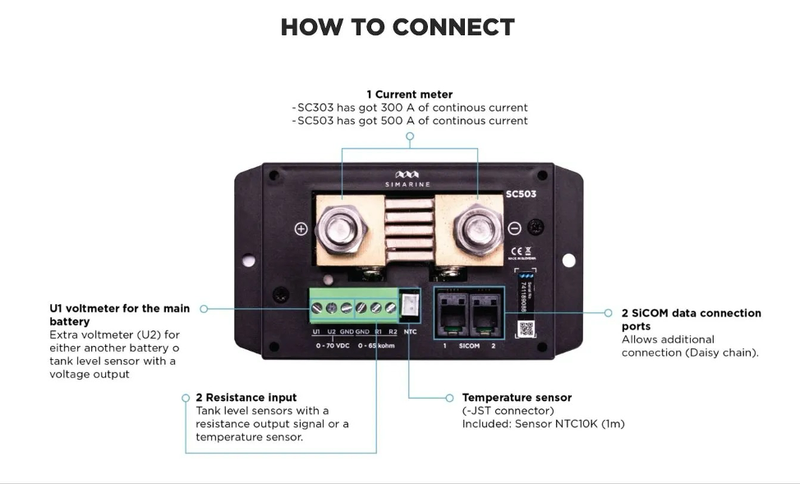
SC303 300A Shunt is included in the design of Simarine PICO One, PICO Standard and Simarine PICO monitoring systems.
SC503 500A Shunt is included in the design of the Simarine PICO Standalone and PICO Blue.
Advantages and Disadvantages
A common advantage for the SC303 300A and SC503 500A is the modularity of the PICO system itself. Depending on your needs, you can select those modules that will suit your project. But don't worry if you underestimate the number of shunts needed. The peculiarity of the system allows you to expand its capabilities by adding the necessary modules.
Before choosing additional modules, you should determine exactly what inputs each one provides, what you're going for, and what can actually be connected to those inputs.
| Advantages | Flaws | |
|---|---|---|
| SC303 300A Shunt | Compact and easy to install High measurement accuracy Reliability and durability |
Maximum current limits |
| SC503 500A Shunt | Larger current range High measurement accuracy Reliability and durability |
More complex installation |
Technical Support and Service
The manufacturer of Simarine PICO system monitor is constantly improving its devices for monitoring yacht batteries. By the way, they can be used in everyday life, as well as for monitoring car batteries. Already by the number of versions and the set of shunts and modules, it is clear that Simarine cares about its customers, expanding the capabilities of PICO measuring and control monitors.
All Simarine PICO products come with a three-year warranty from the date of purchase. If your product does not work properly within the warranty period, it will be repaired or replaced free of charge. The exceptions are standard: if the defect arose after the user modified the device without the written consent of the manufacturer, as well as if the malfunction is the result of a violation of any manufacturer's instructions or failure to timely notify the company of the defect.


